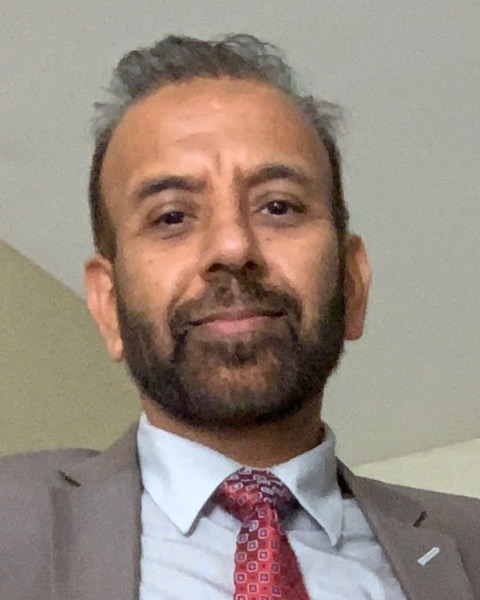Back
CANADIAN CARDIOVASCULAR SOCIETY
CONG
CCS
CCC
CPCA
IMAG
CPCA ORAL ABSTRACT SESSION
ROLE OF MEDICAL THERAPY TO REDUCE THE RATE OF AORTIC DILATATION IN CHILDREN WITH BICUSPID AORTIC VALVE (CCC-170)
Saturday, October 28, 2023
10:30 – 10:45 EST
Location: Palais, 522ABC
Target Audience: Pediatric cardiologist, Pediatric cardiology trainees

Santokh S. Dhillon, MD FRCPC (he/him/his)
Pediatric cardiologist and Electrophysiologist, Program Director of Cardiology
CHRS/CPCA
Dalhousie University
Presenter(s)
Background: Patients with a bicuspid aortic valve (BAV) are at risk for aortic dilatation over time, which can increase the risk of dissection. Some patients are treated with beta blockers or afterload reducing agents to slow the rate of aortic dilation, but their effectiveness is not established in children.
METHODS AND RESULTS: This is a retrospective observational cohort study of 558 patients with a BAV and ascending aorta (AscAo) dilatation from 9 Canadian pediatric cardiology programs. Total follow up duration was 3,407 patient years. Longitudinal mixed models were used to assess the annual rate of AscAo and sinus of Valsalva (SvS) dilatation, expressed in change in Z score units per year (Z/yr), for patients treated and not treated with a beta blocker or an afterload reducing agent. Secondary outcomes were time to severe AscAo dilatation (Z score ≥ 6), assessed by Cox proportional hazards models, and proportions of patients achieving Z score stabilization (rate of dilatation < 0.1 Z/yr), assessed by linear and binomial regressions.
Results: Compared to untreated patients, those treated had a trivial reduction in the rate of AscAo dilatation with an absolute treatment difference of 0.018 Z/yr (95% CI: 0.069 to 0.032) after adjustment for baseline characteristics and Z scores. For SvS, the absolute treatment difference was 0.010 Z/yr (95% CI: 0.064 to 0.043). Patients treated had a marginal reduction in the time to severe dilation of AscAo (hazard ratio: 0.83; 95% CI: 0.43 to 1.61). Patients treated were slightly more likely to achieve Z score stabilization with an increase in 4.5 percentage points for SvS (95% CI: 11.3% to 20.2%). This proportion difference was 7.0 percentage points (95% CI: 9.7% to 22.5%). Overall, the 95%CI of all observed differences between treated and untreated patients overlapped the absence of effect, and the probability of a null effect is high.
Conclusion: Medical treatment did not reduce AscAo and SvS dilatation rates in children with BAV. This retrospective observational study may suffer from indication bias. Nevertheless, the results do not demonstrate the clinical benefit of medical therapy in children with BAV.
METHODS AND RESULTS: This is a retrospective observational cohort study of 558 patients with a BAV and ascending aorta (AscAo) dilatation from 9 Canadian pediatric cardiology programs. Total follow up duration was 3,407 patient years. Longitudinal mixed models were used to assess the annual rate of AscAo and sinus of Valsalva (SvS) dilatation, expressed in change in Z score units per year (Z/yr), for patients treated and not treated with a beta blocker or an afterload reducing agent. Secondary outcomes were time to severe AscAo dilatation (Z score ≥ 6), assessed by Cox proportional hazards models, and proportions of patients achieving Z score stabilization (rate of dilatation < 0.1 Z/yr), assessed by linear and binomial regressions.
Results: Compared to untreated patients, those treated had a trivial reduction in the rate of AscAo dilatation with an absolute treatment difference of 0.018 Z/yr (95% CI: 0.069 to 0.032) after adjustment for baseline characteristics and Z scores. For SvS, the absolute treatment difference was 0.010 Z/yr (95% CI: 0.064 to 0.043). Patients treated had a marginal reduction in the time to severe dilation of AscAo (hazard ratio: 0.83; 95% CI: 0.43 to 1.61). Patients treated were slightly more likely to achieve Z score stabilization with an increase in 4.5 percentage points for SvS (95% CI: 11.3% to 20.2%). This proportion difference was 7.0 percentage points (95% CI: 9.7% to 22.5%). Overall, the 95%CI of all observed differences between treated and untreated patients overlapped the absence of effect, and the probability of a null effect is high.
Conclusion: Medical treatment did not reduce AscAo and SvS dilatation rates in children with BAV. This retrospective observational study may suffer from indication bias. Nevertheless, the results do not demonstrate the clinical benefit of medical therapy in children with BAV.
